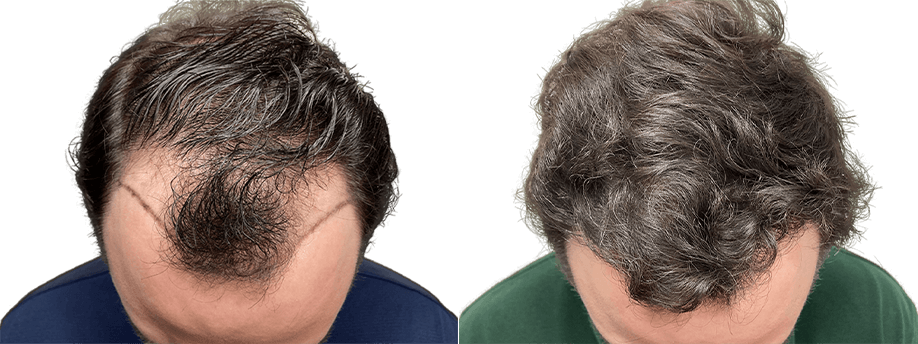What Type Of Hair Transplant Is Best?
As is the case with most things, when it comes to successful hair transplant options, what is best for one person is not necessarily best for another. For this reason identifying a single type of hair transplant as best is incredibly difficult. There are many factors that any prospective patient should consider when choosing an effective hair transplant procedure. To properly evaluate each type of hair transplant and to wind up with the best possible result, patients should commit to conducting an honest assessment of their specific hair loss goals and should make a pointgrafts and up to as many as 5,000 to consult a hair transplant expert near you before reaching any conclusions.
While making a choice regarding the best course of action for a hair transplant, prospective patients should consider the relative convenience of each procedure as well as any associated costs. A highly active patient with a modest amount of thinning hair, for example, may find it most convenient to simply opt for a single session of FUE, which involves a quicker recovery time but is also likely to involve a lengthier hair transplant session.
A patient with more extensive hair loss, on the other hand, is more likely to opt for FUT, which makes it possible to achieve a greater degree of coverage in a single session but also involves a lengthier (though not by very much) recovery time when compared to FUE. Through consultation with a hair restoration professional in your area, the best procedure can be discussed with the patient in order to ensure the best possible hair restoration result while taking the patient’s personal circumstances into account.
Is the Strip Method (FUT) the Best Hair Transplant Technique?
Whether or not a specific hair transplant technique is best is entirely dependent on a variety of conditions specific to the prospective patient. The Strip Method, also commonly referred to as FUT, is an ideal hair transplant technique for patients seeking an option that generates a significant amount of coverage while reducing the possibility of requiring multiple sessions to do so. This is because FUT involves the surgical removal of a strip from a donor site that typically yields up to 3,000 grafts and up to as many as 5,000 to 9,000 individual follicular units.
Patients with extensive hair loss or patients who are seeking to restore a great deal of volume to areas in which thinning hair has become an issue may find that the FUT procedure is the best option for hair restoration based on their unique personal needs. The Strip Method certainly differs from some of the other available options, but what is most convenient for each individual patient is best determined on a case-by-case basis that includes a detailed overview of how FUT can assist a patient in achieving the natural-looking hairline and thickness they are seeking to restore through hair transplantation.
Of course, cost should also be a consideration in determining the most ideal plan of action for a patient, and the FUT procedure tends to be one of the more cost-efficient options since it often requires fewer sessions and less time per session to achieve the patient’s hair restoration goals.
Generally, the Strip or FUT method produces a greater yield compared to the FUE technique.
Is FUE the Best Hair Transplant Technique?
Follicular Unit Extraction, or FUE, is an exceptional method of hair restoration that has successfully solved issues of thinning hair or hair loss in a wide variety of hair transplant clients. While the technique has been consistently successful in generating the result hair transplant patients are seeking, it is critical for prospective patients to recognize that “best” is a relative term that is dependent on the type of hair loss the patient is experiencing as well as a variety of other factors concerning cost and convenience.
The principal benefit of utilizing FUE is the fact that this procedure does not result in scarring and does not require the use of sutures either, which is part of the reason why patients are able to return to normal levels of activity just a single day following the procedure’s completion. If more than a single session is required to meet the patient’s hair restoration goals, those sessions can be scheduled on subsequent days due to the minimally invasive nature of the procedure.

Patients evaluating whether or not the FUE technique is the best available option will also have to consider the fact that the number of grafts that can be transplanted in a single session is limited to a degree. For patients seeking significant coverage, the FUE technique will have to be evaluated according to the cost and convenience associated with multiple sessions.
Is Robotic Hair Restoration the Best Hair Transplant Technique?
A Robotic Hair Restoration is typically utilized in conjunction with the Follicular Unit Extraction, so any evaluation of this type of hair transplant procedure should begin with an analysis of FUE in relation to its efficacy in achieving the personal hair restoration goals of the individual client. In addition to considering the typical factors associated with the FUE technique, prospective hair restoration clients should also understand even sophisticated systems that utilize automation in an efficient manner will still require manual oversight from an experienced hair transplant surgeon.
The benefits of a Robotic Hair Restoration are undeniably similar to the FUE procedure, though Robotic Hair Transplants are often specifically designed to aid in maximizing the total yield of usable hair grafts from the donor site to be transplanted to the recipient site. This is accomplished in a variety of ways, including through the use of a pneumatic tool, a refrigeration system, or a system that prevents any instances of unintentional twisting or pulling that might otherwise damage the hair follicle as it is being removed from the donor site.
The limitation with robotic hair transplants is 1,500 grafts per session.
Is NeoGraft the Best Hair Transplant Technique?
NeoGraft is yet another option available to patients seeking to utilize the FUE procedure to address their hair loss issues, so a patient eligible for FUE may also be quite likely to be eligible for the use of NeoGraft as well. Some doctors and patients will come to the conclusion that the NeoGraft technique is the best option to address a patient’s hair loss or thinning hair, particularly if there is some level of concern that the donor site may not be able to yield sufficient follicular units to deliver the desired outcome. This is because the NeoGraft technique favors an automated system for the removal of individual follicular units, which ensures that the follicles are not damaged by twisting or pulling.
Patients considering the NeoGraft technique must also bear in mind that no level of automation can be considered a sufficient substitute for the handiwork of a skilled and experienced hair transplant surgeon, and this is a simple truth for any type of robotic hair transplant, NeoGraft included. Even though NeoGraft does increase the likelihood of a maximal yield from the donor site, the skilled hands of hair transplant doctors remain exceptionally effective when it comes to getting the most out of a patient’s donor site and are also able to design a natural-looking hairline while also adding significant volume to any thinning areas.
Is SmartGraft the Best Hair Transplant Technique?
One of the many hair transplant techniques utilizing automated technology, a SmartGraft Hair Transplant is similarly ideal for patients seeking to benefit from a maximal number of follicular units taken from a donor site. Used in FUE procedures, SmartGraft uses a pneumatic tool that prevents damage or desiccation to the hair follicle through a closed harvesting system that sends each follicle for immediate storage in a refrigeration unit. The pneumatic tool is itself considered an automated system, but it is worth noting that the efficacy of the procedure still relies on the manual manipulation of the tool.
Patients who have evaluated the FUE transplant technique in detail and feel it is the ideal course of action to achieve their specific goals may find that SmartGraft is a complement for the FUE component of the procedure. In every circumstance, it remains especially critical for the patient to consult a qualified hair restoration doctor near them in order to discuss how this particular procedure will be beneficial with regard to their specific hair restoration needs. Through a consultation in which the prospective client’s needs are outlined in detail, the best available technique can be identified with a greater deal of accuracy and clarity.
Generally speaking, machines and technology for hair transplantation have limitations on the number of grafts that can be harvested and implanted in one session, and they require manual intervention regardless. Furthermore, technology has not proven to reduce the need or number of hair technicians. If you are interested in hair restoration services near you reach out to us here at Maxim Hair restoration for a consultation.

